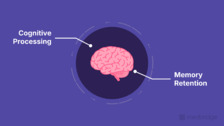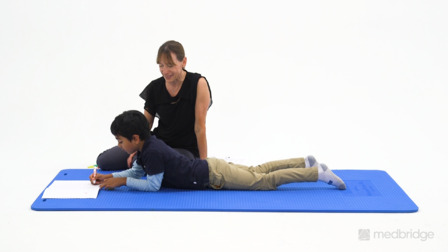Handwriting and Executive Functioning: Understanding
Cognitive, Motor, and Sensory Influences
Presented by Jenny L. Clark
12-Month Subscription
Unlimited access to:
- Thousands of CE Courses
- Patient Education
- Home Exercise Program
- And more
This course explores the multifaceted nature of handwriting, emphasizing its essential role in academic participation and literacy development. Occupational therapy practitioners will examine the cognitive, motor, and sensory systems that support handwriting proficiency, including executive functioning, visual perception, fine and gross motor coordination, and sensory integration. With research-supported strategies and practical examples, the course aims to enhance clinicians’ ability to identify and address the underlying factors that affect handwriting performance in school-aged children. This content is relevant for occupational therapists and other pediatric professionals working in educational, outpatient, or early childhood intervention settings who support children with handwriting difficulties.
Learning Objectives
- Examine the role of handwriting in academic success by recognizing its connection to literacy and identifying factors such as executive functioning, visual perception, and emotional regulation that influence handwriting performance
- Determine the relevance of handwriting by linking performance in handwriting tasks to participation in the occupation of education
- Analyze the impact of gross and fine motor skills on handwriting development, including how visual-motor components, such as prewriting strokes, spacing, line placement, and ocular tracking, contribute to written communication
- Prioritize the role of sensory regulation, primitive reflex integration, and motor planning in handwriting performance and legibility
Meet your instructor

Jenny L. Clark
With over 35 years of pediatric occupational therapy experience, Jenny L. Clark brings passion, expertise, and creativity to her work supporting children with sensory and developmental challenges. A graduate of the University of Kansas, Jenny is an advanced mentored clinician in sensory processing disorder through the STAR…
Chapters & learning objectives

1. Handwriting and Cognitive Influences
This chapter examines how executive functioning, visual perception, and emotional regulation intersect to influence handwriting performance. Learners will explore how cognitive load, visual processing, and emotional state can either support or hinder a child’s ability to write fluently and legibly. Understanding these connections is crucial for identifying hidden barriers to academic success.

2. Handwriting and Motor Skill Influences
This chapter focuses on the foundational role of gross and fine motor skills and details how postural stability, hand strength, and visual-motor integration impact handwriting speed, endurance, and accuracy. Participants will learn how to support these motor components to enhance writing outcomes and reduce fatigue in children.

3. Handwriting and Sensory Influences
This chapter explores how sensory processing—including proprioception, tactile input, and vestibular function—affects handwriting performance. Clinicians will gain insight into how retained primitive reflexes and sensory modulation challenges can impede writing, as well as intervention strategies to improve self-regulation, motor planning, and legibility.

